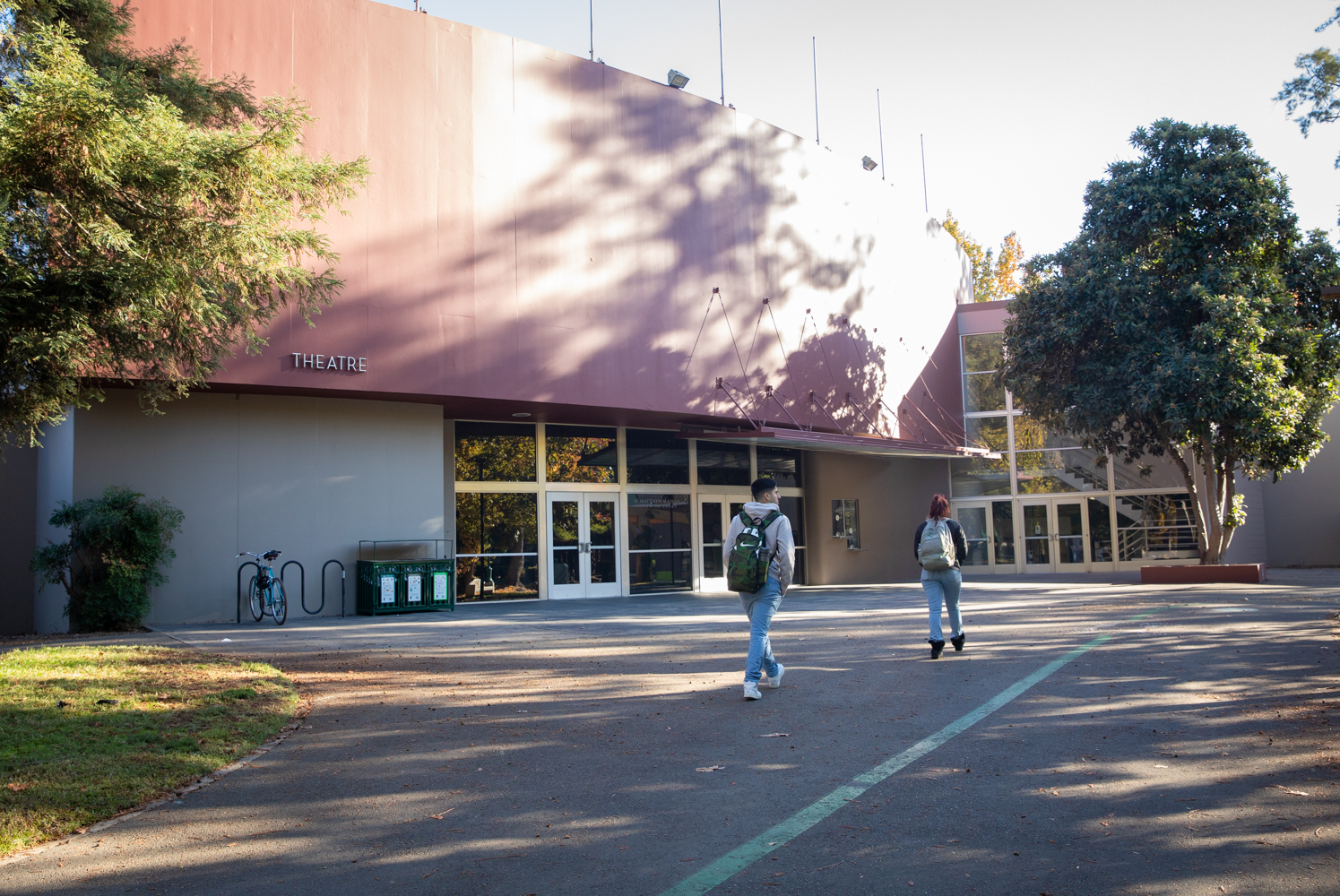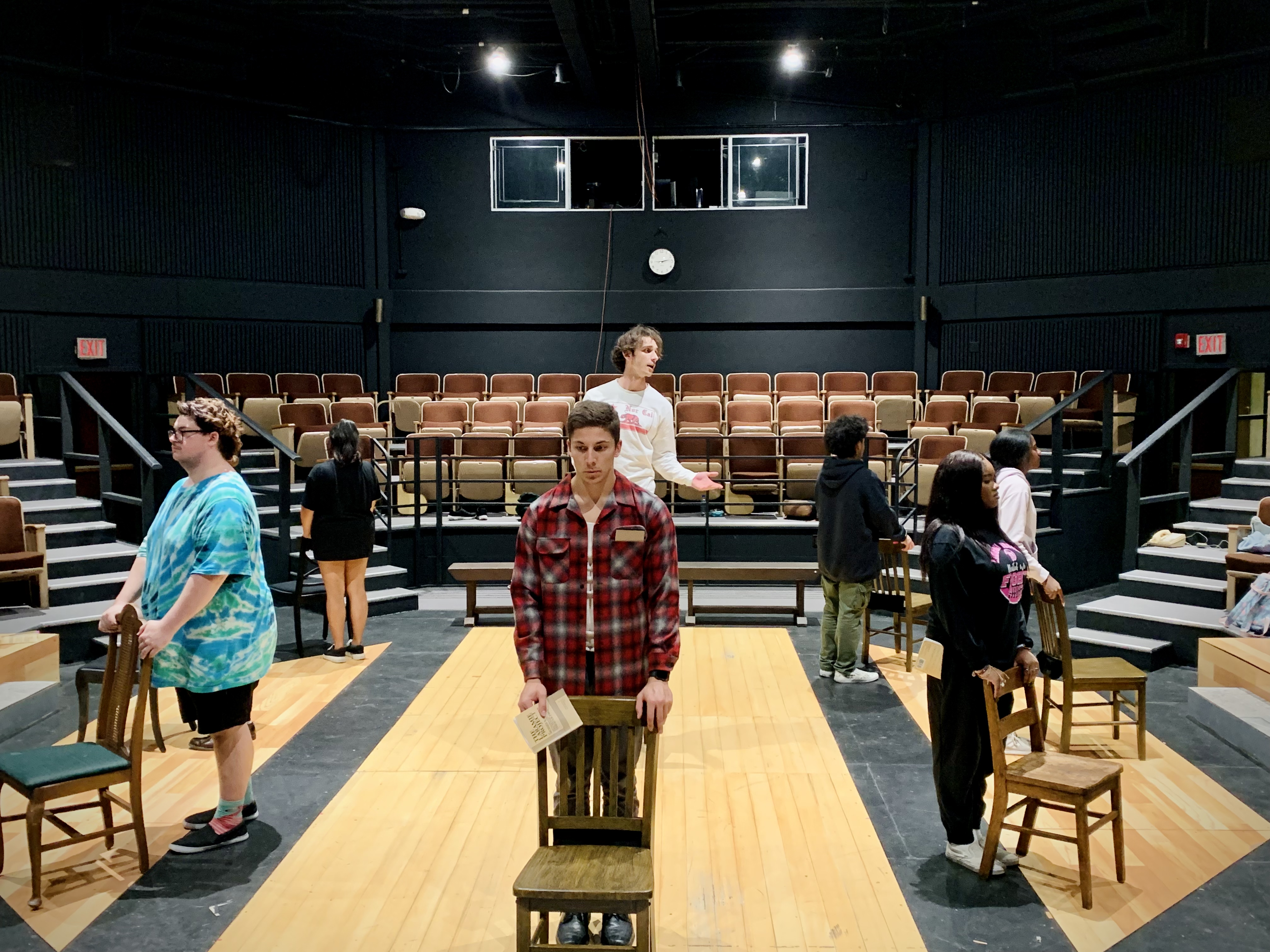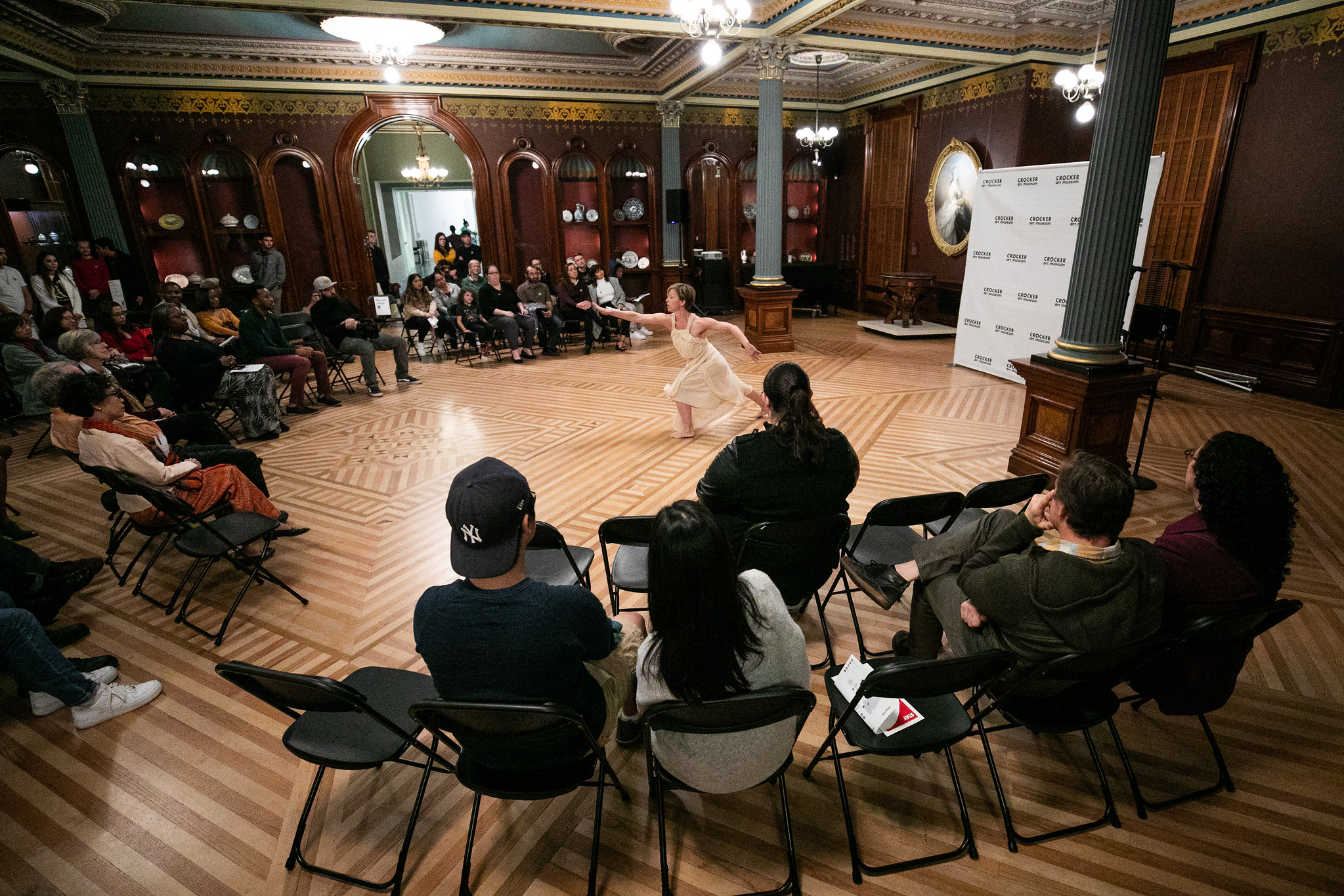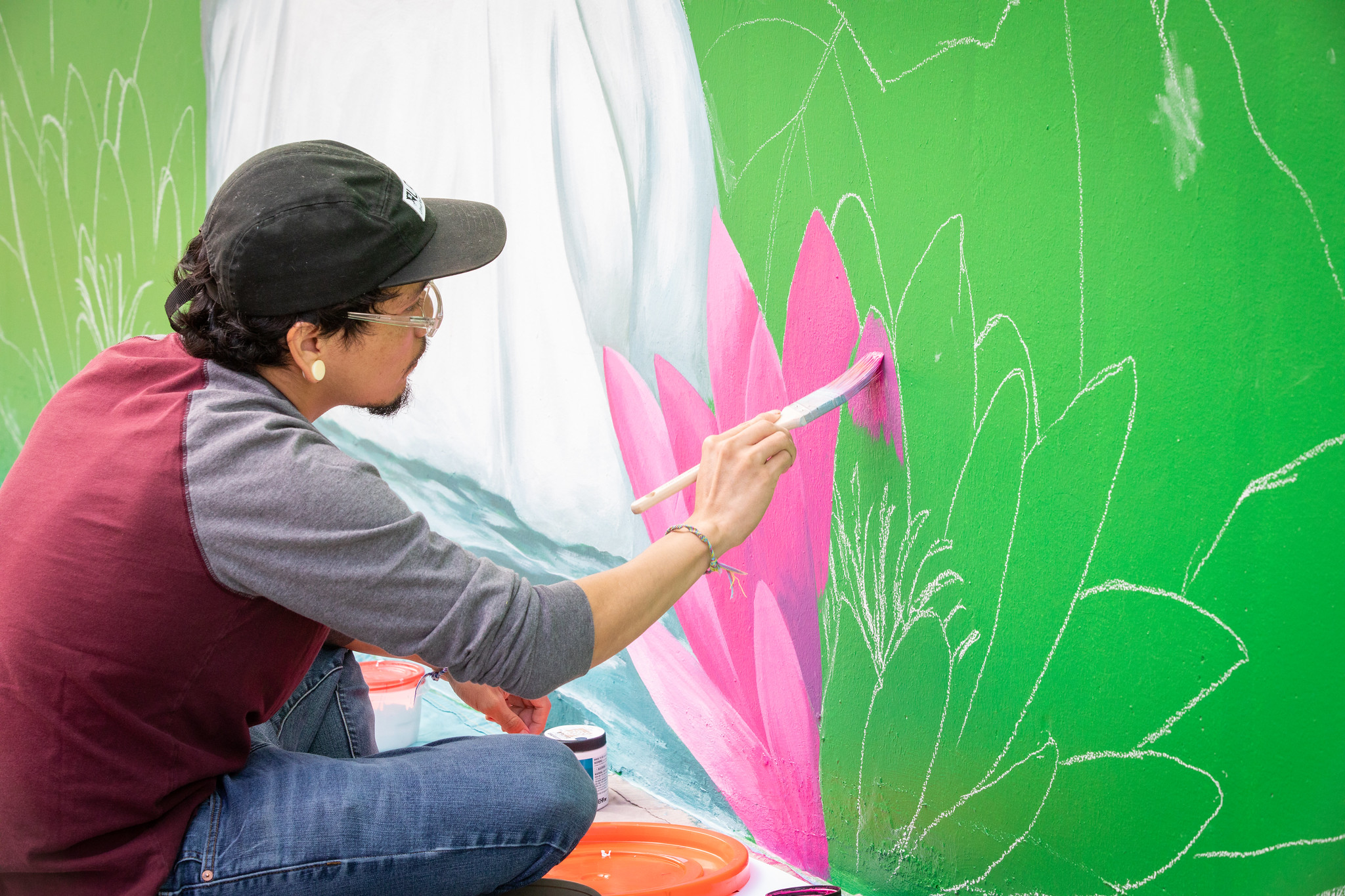Story Content
Behind the scenes, design and tech students take the lead on theater productions

November 18, 2022
Before the semester started and the actors were cast, Diem Nguyen, a senior Theatre major and scenic designer, was reading scripts, wrapping her brain around how to visually convey the essence of the stories, and sketching out set designs.
Nguyen then passed her vision to Michael Ruiz, a senior Theater Arts major and scene shop lead, whose job was to figure out how to make it work practically onstage – what type of wood to use, for example, or how big to make a particular platform.
Meanwhile, in his role as lighting designer, senior Theatre Arts major Dylan Latham was hard at work “painting with light,” as he puts it, figuring out how to illuminate the stage in a way that best serves the show.
When those lights went up on Sacramento State’s fall theater productions, the actors took center stage. The work of Nguyen, Ruiz, Latham, and three dozen students working in design and technical capacities, however, was – though often unseen – critical to their success.
This year, two decisions are enhancing the experience those students receive, helping to better prepare them for careers in professional theater.
"In my time here at Sac State, this is one of the most truly collaborative experiences,” said Michelle Felten, vice chair of the Department of Theatre and Dance and director of “The 25th Annual Putnam County Spelling Bee,” one of the two upcoming productions. “We're attempting to create an environment where (for) the students, it's not just acting. They’re really taking lead positions in other areas, and the mentorship is deepening."
“Spelling Bee,” an upbeat musical comedy, ran from Oct. 27-Nov. 13 The other show, the somber but powerful play “The Laramie Project,” opened Nov. 3 and closes Nov. 20.
“It's important to delineate the paths in theater, to get in and to help students to recognize that these bold choices that are made for what the environment looks like, there's artistry in that, there are careers in that, really exciting careers. -- Stephen Jones, assistant professor of Theatre and Danice
The shows for the first time are being presented “repertory style,” with the performances on alternating weeks. Following “Spelling Bee’s” initial weekend of performances, students spent the early part of the following week switching the stage to the “Laramie” set for its performances the second weekend, a pattern that carried on throughout the month.
That experience that will be useful to students if they work for a festival or another venue where multiple shows are in production simultaneously.
Students this year also have been given much more creative control over the productions’ technical elements. The shows are completely designed by students, under faculty mentorship.
“We're seeing the excitement of students being able to make visual storytelling choices,” said Stephen Jones, an assistant professor of Theater and Dance who teaches scenography and scenic design.
Students are making innovative practical choices, Jones added. One, for example, designed a smoother way to move scenery during a set change.
“It's important to delineate the paths in theater, to get in and to help students to recognize that these bold choices that are made for what the environment looks like, there's artistry in that, there are careers in that, really exciting careers,” he said.
The two shows couldn’t be any more different, presenting unique challenges in designing them to run concurrently. “The 25th Annual Putnam County Spelling Bee” is a funny, lighthearted, and heartwarming sendup of academic competitions. Students have converted the Playwright’s Theater into a makeshift school auditorium, complete with flags and school-themed banners.
“The Laramie Project,” on the other hand, tells of the 1998 murder of Matthew Shephard, an openly gay young man from Laramie, Wyoming, through the real words of residents and others interviewed after the killing. Sac State’s production of the minimalist play features a simpler set of eight chairs that are rearranged and repurposed as needed, including to create the fence to which Shephard was tied after he was brutally beaten.
“I find it interesting doing these two plays at the same time, because you have one that is a really happy play about kids that love to spell, and the other one not so much,” Nguyen said, noting that the set for “Laramie” is literally built on top of the “Spelling Bee” set. “You can’t have both at the same time, but we are.”
For “Laramie,” Nguyen sketched a set with a rustic and natural feel, featuring weathered wood to convey the feeling of a small town where not much is new. “Spelling Bee,” she said, involved more artistic elements, including the school-themed posters and banners that will line the wall of the “gym.”
For all three student leads – Nguyen, Ruiz, and Latham – shouldering this level of responsibility on a theater production is a first and has been, Ruiz said, “liberating, knowing that we can take the reins, and we can take responsibility.”
“But then, having it be in the safety of a school setting has been really nice, because you don't have the real-world stress just yet,” Ruiz said. “It's been very helpful in getting confidence. Okay, we can do what we've been learning.”
Latham agrees. His roles as assistant lighting designer on “Spelling Bee” and lighting designer on “Laramie Project” have included everything from determining the specific color shade with which to illuminate a scene to the actual running of wires and circuitry.
The faculty, Latham said, have been supportive, not telling him and the other design and technical students what to do but offering advice and suggestions and letting them find their own solutions.
“I’ve definitely learned a lot about the process and how to do it,” he said. “I feel pretty confident.”Media Resources
Faculty/Staff Resources
Looking for a Faculty Expert?
Contact University Communications
(916) 217-8366
communications@csus.edu


